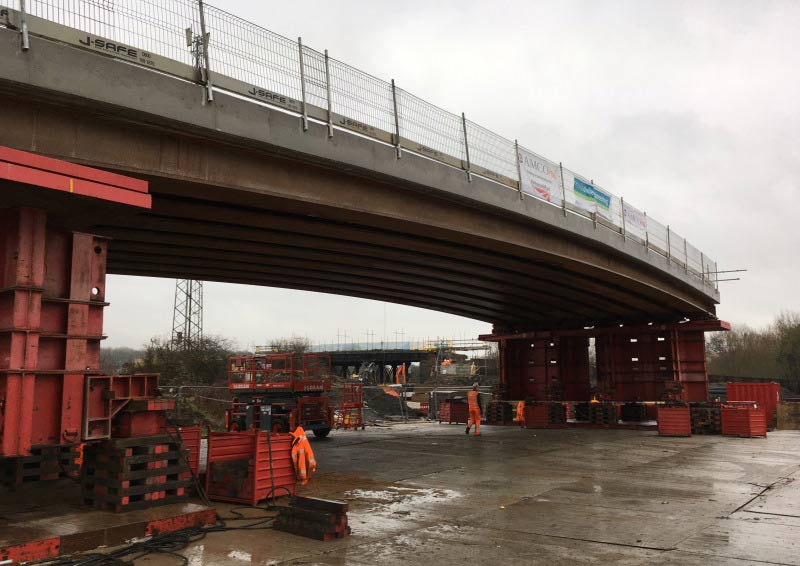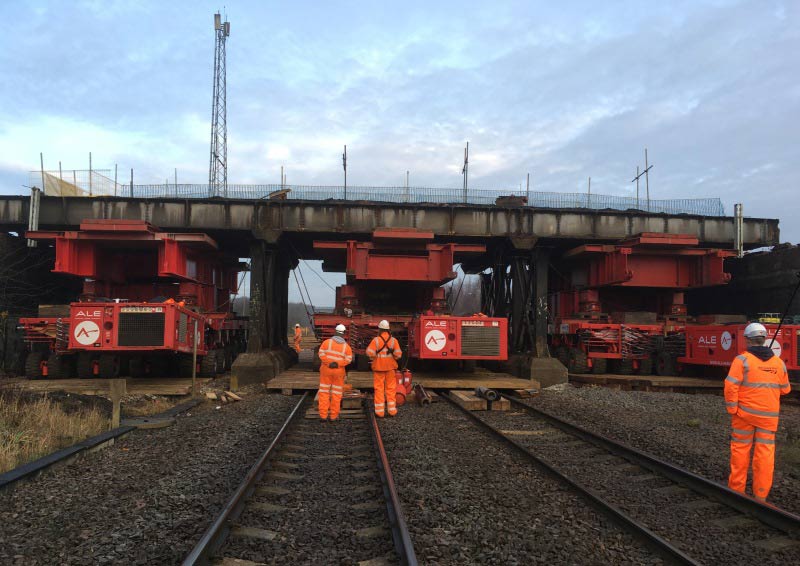
History Meets Heritage in Derbyshire Scheme
28/02/2017 - posted in Bridges, Civils, Geoenvironmental, HBPW News, Industrial, Rail, Value EngineeringA stunning £3.1m bridge replacement scheme which will not only improve pedestrian safety and driver visibility in part of Derbyshire, it will also create better access to one of Britain’s most important industrial heritage sites.
Network Rail took the decision to replace the Victorian overbridge at Awsworth Road near Ilkeston after the original 1901 structure – weighing in at 425 tons – came to the end of its natural life.
HBPW Engineer and Design Project Manager, Damianos Bouklas, takes up the story: “The original bridge, costing just £1,216 when it was first built at the turn of the last century, had seen little in the way of structural improvement other than being raised by approximately three feet in 1951 following mining subsidence.”
But after months of planning three huge ‘SPMT’ vehicles, each capable of lifting hundreds of tonnes, moved into place and removed the old three span bridge, which crosses the main Derby to Chesterfield railway line, replacing it with a new, impressive single span structure.
“It is not only wider, enabling us to include a pedestrian footpath, but also approximately two feet higher – hence the curved bridge deck design – which means Network Rail will be able to electrify the line below without any height obstructions. The single span configuration will also further benefit the project by allowing the future optimisation of the currently skewed tracks.”
However, beyond the engineering ramifications, improved pedestrian access also means that people will now be able to cross the bridge safely to reach the much visited Bennerley Viaduct, built in 1878 and one of only two such structures of their type in the UK.
The area also had the dubious honour of being bombed by the German Navy during the Great Midlands Zeppelin Raid of 1916 when nine Zeppelin airships of the German Airship Naval Division conducted a bombing raid over the British Midlands, hence its interest to local historians.

Old bridge being lifted out using three SPMT’s
Damianos added: “It has been a challenging project, requiring of comprehensive temporary works so that the SPMTs could gain access to do their job. However, the temporary works were further complicated by the presence of former opencast mineworkings, and we had to get HBPW’s geotechnical department to carry out crucial investigations to ensure that the massive SPMTs did not create subsidence because of their sheer size and the presence of historic ‘bell’ shafts below ground.
“However, despite all the challenges, we have achieved an amazing result which came to fruition following a 29-hour possession.”
The utilization of the existing embankments, Network Rail’s electrification requirements and the challenging ground conditions were only some of the constraints that had to be dealt with during the design process.
As part of the bridge foundations, 600mm diameter bored piles, with integrated bankseats, were used and, to provide for future demolition of the existing masonry abutments, that currently act as retaining walls, a combination of long and short infill bored piles was also utilised.
“The short infill piles, which get their stiffness from the integrated bankseats, have meant a significant reduction in the overall length of the bored piles, delivering substantial cost and programme benefits,” said Damianos
Construction of the bridge is part of a wider £10 million investment in a new station for Ilkeston which is being led by Derbyshire County Council and delivered by Network Rail. The Awsworth bridge has now been put forward for an Institution of Civil Engineering (ICE) award.
